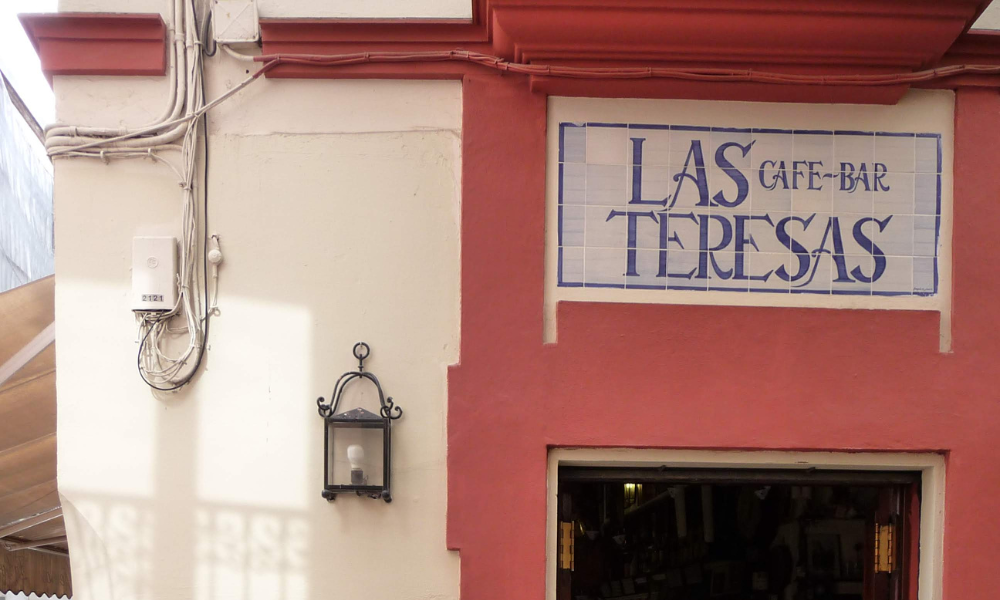
Mediterranean Roots in Canada
(Greece & Spain)
Walking along the Danforth, you hear Greek in the shop windows and smell oregano on the breeze; a few blocks over in cities across Canada, tapas bars glow late with saffron, garlic, and paprika. Souvlaki and spanakopita share the table with tortilla española, patatas bravas, paella, and churros. Feta and olives, jamón and manchego, strong Greek coffee and tiny glasses of Spanish sherry—Mediterranean flavours that slipped easily into Canadian evenings.
The influence has always been one of abundance and celebration: long tables, grilled meats, crisp salads bright with lemon, seafood kissed by olive oil, and sweets dripping honey or dusted with sugar. In a country where winters can be long, these sun-soaked traditions brought warmth—food meant for passing plates, clinking glasses, and telling one more story before the night ends.
What makes it uniquely Canadian is how Greek and Spanish food joined the wider mosaic—kept their names and roots, yet found a home beside prairie bread and coastal catch. Family, sharing, hospitality: values that fit perfectly here. Plate by plate, these traditions became everyday comfort, reminders that Canada’s table is generous, joyful, and always making room.


















Mediterranean-Canadian
A bowl of pure summer, this chilled Spanish classic feels right at home in Canada — think greenhouse tomatoes, market cucumbers, and patio lunches on hot prairie or coastal days. It’s bright, fresh, and no-cook: blitz, chill, and pour.
Paella, the way we make it here, feels like humble food with a big heart—rice taking on the flavours of what’s at hand, a little chorizo for warmth, peas for sweetness, and chicken crisped in the oven so everyone gets a crackly piece. It’s the kind of pan you set in the middle of the table after a long day—boots by the door, stories starting—proof that simple ingredients, cooked with care, can gather a room and feed it well.
Navy beans were a staple ration for sailors in the Royal Canadian Navy, and today they’re grown widely in Ontario. This dip blends old-world chorizo with a Canadian staple, giving you layers of smoky, creamy, and spicy flavours in one easy dish. It’s the kind of recipe you’ll bring out at a party and find the jar scraped clean.
Spanakopita has become part of Canada’s own food mosaic thanks to the country’s vibrant Greek community. From Toronto’s Greektown to neighbourhood bakeries in Montreal and Vancouver, crisp phyllo parcels filled with spinach, herbs, and feta are now as Canadian as they are Greek. Using local spinach from summer markets and Québec-made feta, this dish reflects how immigrant traditions took root here — bringing bold flavours, warm hospitality, and a taste of the Aegean to Canadian tables.
Chickpea fritters may trace their roots to the Mediterranean and Middle East, but in Canada they’ve found a natural home thanks to thriving Greek and Middle Eastern communities. From Toronto’s Danforth to Vancouver’s Commercial Drive, you’ll find versions of falafel, panelle, and herb-packed fritters on menus and at festivals.
Chickpea fritters may trace their roots to the Mediterranean and Middle East, but in Canada they’ve found a natural home thanks to thriving Greek and Middle Eastern communities. From Toronto’s Danforth to Vancouver’s Commercial Drive, you’ll find versions of falafel, panelle, and herb-packed fritters on menus and at festivals.
Bulgar wheat has nourished the Mediterranean for thousands of years, but in Canada it found a new home through waves of Greek and Middle Eastern immigration. By the late 20th century, it appeared at community dinners, Greek festivals, and eventually in health-conscious kitchens across the country. With Canadian wheat at its core, this salad blends sun-ripened tomatoes, cucumber, and herbs into a dish that feels both timeless and distinctly Canadian.
Fresh, vibrant, and simple, these salads are built on the same foundation — juicy tomatoes, crisp cucumber, onion, olives, and good olive oil. In Greece, the classic horiatiki is finished with feta and oregano, while in Cyprus, halloumi takes centre stage. In Canada, they’ve become summer favourites at backyard tables, blending Mediterranean flavours with local produce like Ontario and BC greenhouse tomatoes that rival the sweetness of the Mediterranean sun.
This dish speaks to both resilience and flavour — a humble, hearty meal with roots in Spanish cooking that feels right at home in Canadian kitchens. Immigrant traditions brought smoky chorizo to Canada, where it mingled with Prairie potatoes and backyard greens. Crowned with a fried or poached egg, it’s the kind of dish that proves simple ingredients can still feel rich, comforting, and complete.
Unlike its Greek cousin, the Canadian version swaps lamb for spiced beef and is paired with a sweet, garlicky sauce that’s unlike anything else. Created in the 1970s by restaurateur Peter Gamoulakos in Halifax, the donair quickly became a late-night staple, especially after a night on the town. Traditionally cooked on a vertical spit, many home cooks make it loaf-style in the oven: seasoned beef shaped, baked, then sliced thin and served in pitas with onions and tomatoes. In 2015, Halifax even declared the donair its official food — proof of just how iconic this messy, delicious wrap has become.
Lamb kofta has deep roots in Middle Eastern and Mediterranean cooking, where skewers of spiced lamb are grilled over open flames and served with cooling yogurt sauce. In Canada, it has become a barbecue and festival favourite — blending old-world flavours with local meats and seasonal herbs. Smoky, juicy, and fragrant with cumin, coriander, and mint, these koftas are just as perfect on a summer grill as they are baked indoors during colder months.
Souvlaki is one of Greece’s most beloved street foods, but in Canada it has become a true comfort classic, thanks to thriving Greek communities in cities like Toronto and Montreal. From summer festivals to family-run diners, skewers of marinated chicken served with tzatziki, pita, and salad are now part of our own food story. Juicy, smoky, and tangy with lemon, this dish is as perfect for Canadian grilling season as it is baked indoors in winter.
This dish balances warmth, colour, and spice in a way that feels perfectly at home in Canada. Harissa, a North African chili paste, has become a pantry staple in multicultural kitchens from Vancouver to Toronto. Canadians often give it a local twist — a drizzle of maple syrup for sweetness, or pepper jelly made from Prairie peppers for a distinctly regional flavour. Paired with hearty vegetables and comforting proteins like chicken or pork, this meal reflects the Canadian table: global inspiration grounded in local abundance.
Inspired by Spain’s tortilla de patatas, the frittata has found a home in Canadian kitchens as a quick, healthy, and adaptable dish. It’s my go-to for using up vegetables, and with a little cheese baked on top, it turns golden, hearty, and comforting. Perfect for breakfast, brunch, or a simple lunch — and it keeps well in the fridge for busy mornings.
Soft, warm pita is the kind of bread that invites sharing — torn, dipped, and filled. In Canada, it arrived with Greek immigrants who opened restaurants and bakeries, especially in Toronto’s Greektown, where souvlaki, pita, and tzatziki became part of the city’s food identity. Over time, pita moved beyond Greek tables and into Canadian kitchens.





















